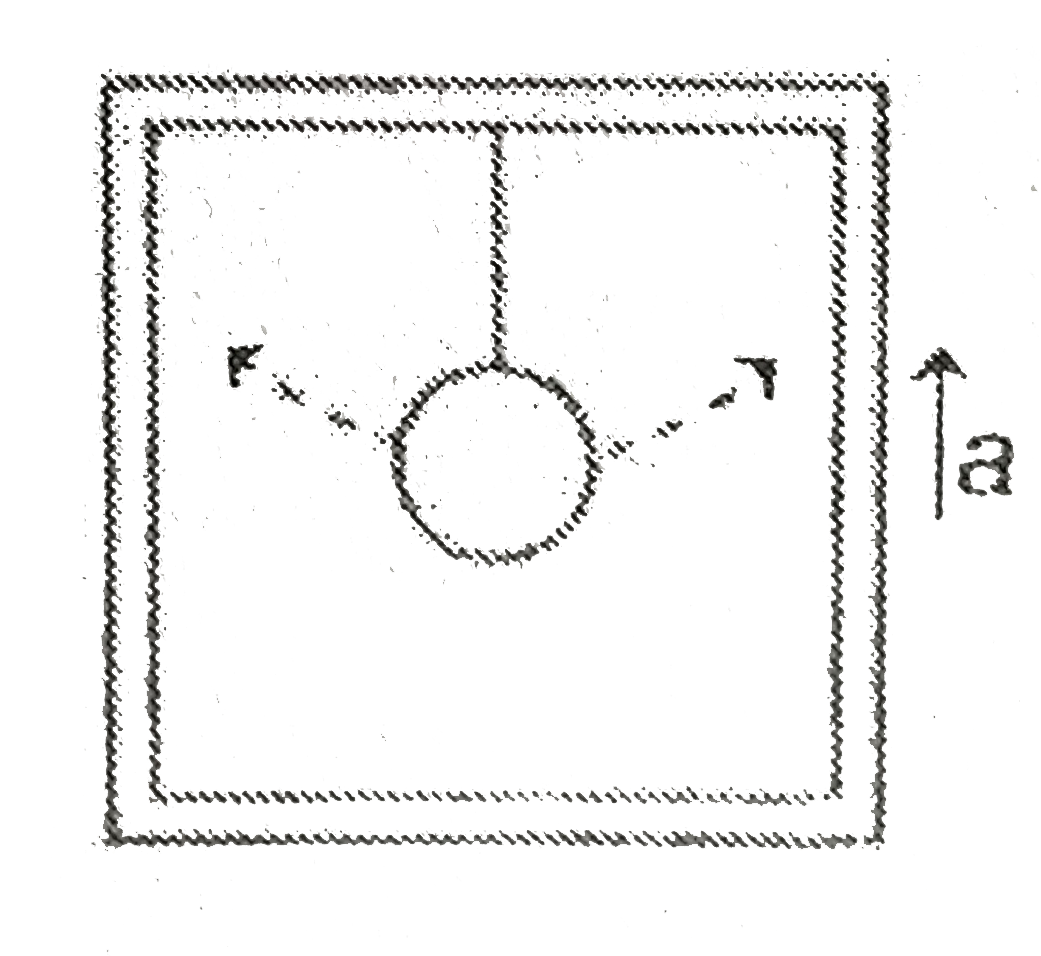When a body is thrown up in a lift with a velocity u relative to the lift, the time of flight is found to be t. The acceleration with which the lift is moving up is
u−gtt
u+gtt
2u−gtt
ut−2g
To solve the problem, we need to analyze the motion of a body thrown upwards in a lift that is accelerating upwards. We will use the equations of motion to derive the expression for the acceleration of the lift.
1. Understanding the Scenario:
- A body is thrown upwards with an initial velocity u relative to the lift.
- The time of flight until the body returns to the same height is t.
- We need to find the upward acceleration a of the lift.
2. Using the Equation of Motion:
- The displacement of the body relative to the lift during the time of flight is zero (it returns to the same height).
- We can use the equation of motion:
s=ut+12arelativet2
- Here, s=0 (since the body returns to the same height), u=u (initial velocity), and arelative is the relative acceleration.
3. Finding the Relative Acceleration:
- The relative acceleration arelative is affected by both the gravitational acceleration g (acting downwards) and the lift's acceleration a (acting upwards).
- Therefore, we can express the relative acceleration as:
arelative=−g+a
4. Substituting into the Equation:
- Substituting s=0 and arelative into the equation gives:
0=ut+12(−g+a)t2
- Rearranging this equation, we get:
ut=12(g−a)t2
5. Simplifying the Equation:
- Multiplying through by 2 to eliminate the fraction:
2ut=(g−a)t2
- Rearranging for a:
a=g−2ut
6. Final Expression:
- Thus, the final expression for the acceleration of the lift is:
a=2u/t−g
Conclusion:
The acceleration of the lift is given by:
a=2ut−g
- A body is thrown upwards with an initial velocity u relative to the lift.
- The time of flight until the body returns to the same height is t.
- We need to find the upward acceleration a of the lift.
- The displacement of the body relative to the lift during the time of flight is zero (it returns to the same height).
- We can use the equation of motion:
s=ut+12arelativet2
- Here, s=0 (since the body returns to the same height), u=u (initial velocity), and arelative is the relative acceleration.
- The relative acceleration arelative is affected by both the gravitational acceleration g (acting downwards) and the lift's acceleration a (acting upwards).
- Therefore, we can express the relative acceleration as:
arelative=−g+a
- Substituting s=0 and arelative into the equation gives:
0=ut+12(−g+a)t2
- Rearranging this equation, we get:
ut=12(g−a)t2
- Multiplying through by 2 to eliminate the fraction:
2ut=(g−a)t2
- Rearranging for a:
a=g−2ut
- Thus, the final expression for the acceleration of the lift is:
a=2u/t−g
The acceleration of the lift is given by:
a=2ut−g
Topper's Solved these Questions
Similar Questions
A body is thrown up in a lift with a velocity 5ms−1 relative to the lift and the time of flight is found to be 0.8 s. The acceleration with which the lift is moving up is (g=10ms−2)
View SolutionA body is thrown up in a lift with a velocity u relative to the lift, and returns to the lift in time t. Show that the lift's upward acceleration is (2u-gt)/t
View SolutionA lift is moving up with acceleration a A person inside the ligt throws the ball upwards with a velocity u relativeto hand.
a. What is the time of flight of the ball?
b. What is the maximum height reached by the ball in the lift?

View SolutionA body of mass 50 kg and specific gravity force is to be lifted using a rope of breaking strength of 60 kg wt. The acceleration with which it can be pulled up in least interval of time
View SolutionStatement A : When a person is on the floor of a lift which is at rest, the resultant force on him is equal to his weight
Statement B : When the lift is moving with uniform velocity, then the apparent weight of the man is zero
View SolutionA person of 60 Kg mass is in a lift which is coming down such that the man exerts a force of 150 N on the floor of the lift. Then the acceleration of the lift is (g=10 ms−2)
View SolutionA coin is dropped in a lift. It takes time t1 to reach the floor when lift is stationary. It takes time t2 when lift is moving up with costant acceleration. Then
View SolutionA scientist measures the time period of a simple pendulum as T in a lift at rest. If the lift moves up with accelerationi as one fourth of the acceleratioin of gravity, the new time period is

View SolutionThe apparent weight of man inside a lift moving up with certain acceleration is 900N. When the lift is coming down with the same acceleration apparent weight is found to be 300N. The mass of the man is (g = 10ms−2)
View SolutionA man in a lift feels an apparent weight W when the lift is moving up with a uniform acceleration of 1/3rd of the acceleration due to gravity. If the same man were in the same lift now moving down with a uniform acceleration that is 1/2 of the acceleration due to gravity, then his apparent weight is
View Solution